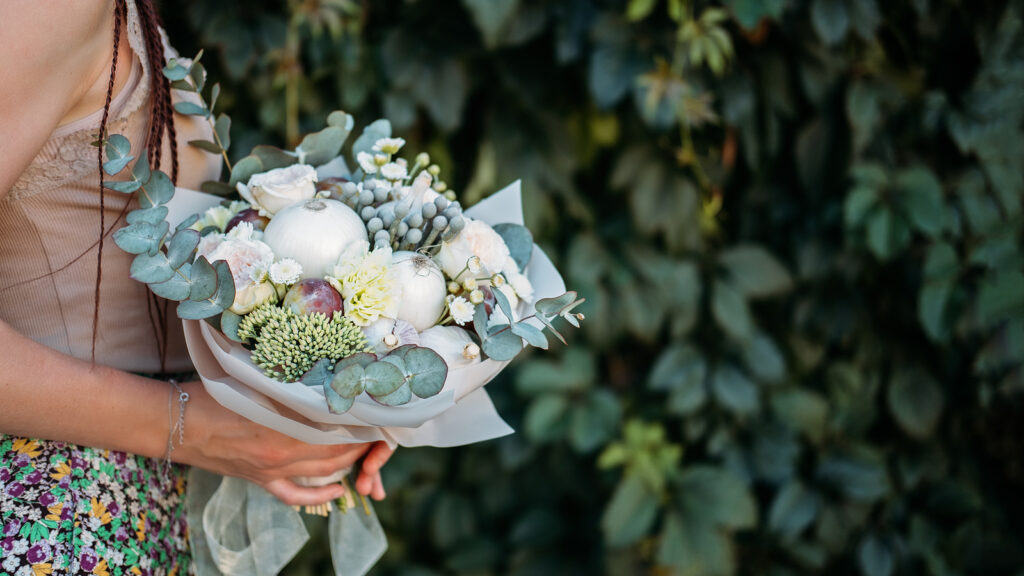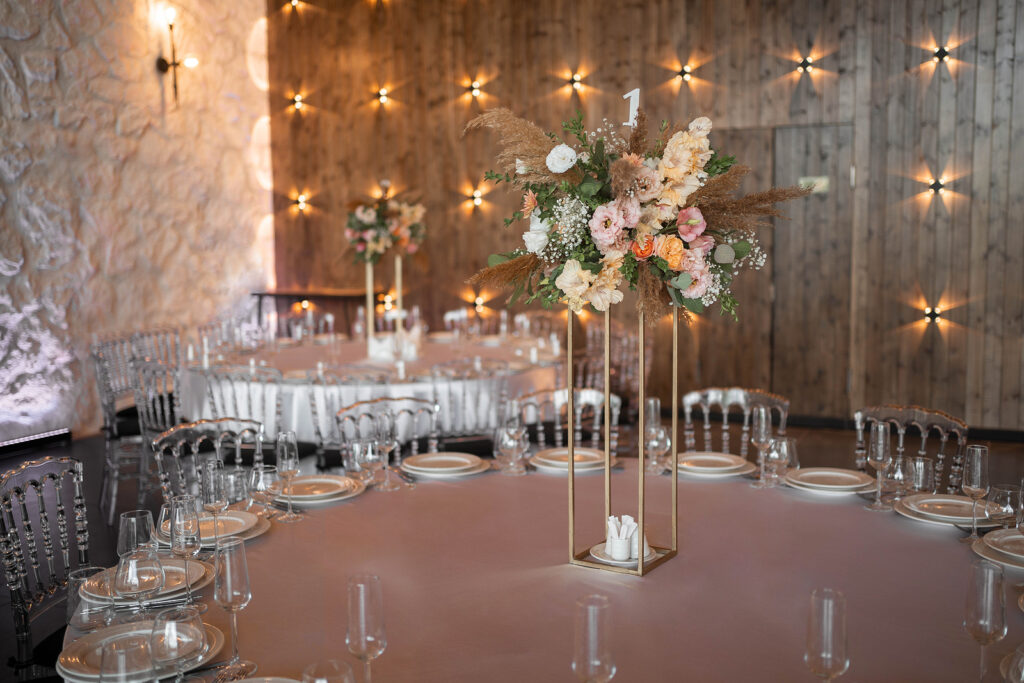How to DIY Wedding Flowers
Planning our wedding was such an exciting journey, but we quickly realized how expensive floral arrangements could be. However, with a touch of creativity and a lot of do-it-yourself spirit, my partner and I discovered a fantastic way to create stunning wedding flower arrangements without breaking the bank.
We'd love to share our comprehensive guide with you, taking you step by step through the process of selecting the perfect blooms and arranging them into beautiful centerpieces and bouquets. Get ready to embark on your own floral adventure and save some serious cash while doing so!
Why Choose DIY Wedding Flowers?
When considering the option of DIY wedding flowers, it's essential to understand the multitude of advantages it offers for your big day. Let's delve into the compelling reasons to embrace this creative and cost-effective approach:
Cost Savings
Weddings often come with substantial expenses, and flowers can be a significant contributor to your overall budget. Opting for DIY arrangements empowers you to curtail costs significantly, allowing you to allocate those savings to other essential aspects of your wedding, such as catering or entertainment.
Personalization at Its Best
DIY wedding flowers provide an unmatched opportunity for personalization. You gain complete control over the artistic direction of your floral arrangements. Choose the specific flowers that resonate with your style and vision, tailor the colors to match your theme perfectly, and design bouquets and centerpieces that reflect your unique love story.
A Sense of Achievement
Crafting your own wedding flower arrangements can be an incredibly fulfilling endeavor. There's a deep sense of pride in creating something beautiful with your own hands, and it adds a profound personal touch to your special day. This hands-on experience can be a cherished memory in itself.
Eco-Friendly Consciousness
Going the DIY route with your wedding flowers provides an opportunity to be environmentally conscious. By selecting locally sourced and in-season flowers, you can reduce your carbon footprint and support sustainable practices. This eco-friendly approach aligns your celebration with principles of environmental responsibility, adding a meaningful layer to your wedding experience.

Practical Steps of How to DIY Wedding Flowers
Step 1: Planning Your Wedding Flower Budget
Planning the floral aspects of your wedding requires careful consideration to ensure you strike the right balance between beauty and budget. Here's how to navigate this crucial step:
Determine Your Budget with Precision
Begin by establishing a well-defined budget dedicated to your wedding flowers. While DIY projects can be cost-effective, setting limits is essential. Determine the maximum amount you're comfortable spending on your floral arrangements and commit to sticking to it. Remember, DIY doesn't imply unlimited spending; it's about making smart choices within your financial boundaries.
Prioritize Your Floral Needs According to Your Vision
Each wedding has its unique vision, and your floral elements should align with it. Start by identifying the key floral components necessary for your special day. These may include bridal bouquets, bridesmaid bouquets, boutonnieres, centerpieces, and ceremony decorations. Prioritize these elements based on their significance to your overall vision. This will guide you in allocating your budget efficiently.
Research Flower Costs Thoroughly
Before making any decisions, embark on thorough research to gain insight into the costs associated with various types of flowers and greenery. Keep in mind that flower prices can fluctuate significantly depending on factors such as the season and your location. Familiarize yourself with the market rates, and be prepared to adapt your choices based on budget constraints.
Allocate Your Budget with Careful Consideration
Now that you have a clear understanding of your budget and floral priorities, it's time to allocate your financial resources wisely. For instance, if the bridal bouquet holds particular importance to you and your vision, allocate a larger portion of your budget to this focal piece. Simultaneously, explore cost-effective options for other floral arrangements, such as opting for in-season blooms or incorporating greenery to complement your floral choices. Balancing your budget strategically ensures you achieve the desired aesthetic while staying within your financial boundaries.
Step 2: Choosing Your Wedding Flowers
Choosing the right flowers for your wedding is a crucial step in bringing your vision to life. Here's an in-depth look at how to make informed decisions:
Seasonal and Local Flowers for Savings and Sustainability
Opting for seasonal and locally sourced flowers can be a smart choice for both your budget and the environment. Seasonal blooms are typically more cost-effective and boast superior freshness, as they don't require long-distance transportation. By embracing local and in-season flowers, you not only save money but also reduce your carbon footprint, aligning your wedding with eco-conscious practices.
Explore a Diverse Array of Flower Types
When contemplating your floral choices, explore a diverse range of flower types to find those that resonate with your wedding theme and color scheme. Popular wedding flowers such as roses, peonies, lilies, hydrangeas, and baby's breath offer a timeless and romantic appeal. However, feel free to think beyond tradition and consider unique, lesser-known flowers that hold personal significance to you and your partner. The key is to select blooms that not only complement your theme but also evoke the emotions you wish to convey.
Harmonize with Your Color Palette
To create a cohesive and visually appealing aesthetic, ensure your chosen flowers harmonize with your wedding's color palette. Your diy wedding bouquet flowers should seamlessly blend with the overall theme, from the ceremony to the reception. Experiment with different flower colors and combinations to discover the perfect match for your vision.
Accurate Quantities: Plan Ahead
Precisely calculating the number of flower stems needed for your arrangements is vital. To prevent any last-minute surprises or shortages, it's wise to slightly overestimate the quantities required. Consider factors such as the size of your venue, the number of tables, and the scale of your bouquets and centerpieces. Having a surplus ensures you have enough flowers to accommodate unexpected mishaps or changes in your design plan.

Step 3: Gathering Your Floral Supplies
To embark on the exciting journey of crafting your own wedding flowers, you must be well-equipped with the necessary tools and supplies. Here's a comprehensive list of items you'll need to ensure your DIY floral creations are a resounding success:
- Floral Shears or Clippers: Invest in high-quality floral shears or clippers to achieve clean and precise cuts. Proper cutting tools are essential for maintaining the freshness and vitality of your flowers.
- Floral Tape: Floral tape is a valuable tool for securing stems together when fashioning bouquets, boutonnieres, or corsages. It provides stability and keeps your arrangements intact.
- Floral Wire: Floral wire serves a dual purpose: providing structural support for delicate blooms and assisting in securing various elements of your floral designs. It's indispensable for creating durable arrangements.
- Floral Foam: Floral foam, often referred to as oasis foam, is a must-have for crafting stable centerpieces. It not only supports your flowers but also retains water, ensuring your blooms stay hydrated and vibrant throughout your wedding day.
- Vases and Containers: Choose vases or containers that align with your wedding theme and are appropriately sized for your floral arrangements. The vessel you select will contribute to the overall aesthetic of your creations.
- Ribbon or Twine: Incorporate decorative ribbon or twine to add a finishing touch to your bouquets and boutonnieres. The choice of ribbon color and style can complement your wedding's color palette and style.
- Flower Food: Extend the lifespan of your flowers by using flower food. Many florists provide flower food packets with flower purchases, but it's advisable to have some on hand to ensure the longevity of your DIY arrangements.
- Protective Gear: Don't overlook the importance of protective gear. Gloves and aprons are essential to shield your hands and clothing from dirt, thorns, and any potential mess during the flower-arranging process.
Step 4: Arranging Your DIY Wedding Flowers
As you embark on the creative process of crafting your diy wedding flowers guide, each element plays a crucial role in bringing your vision to life. Here's a detailed guide on how to expertly arrange various floral components:
Bridal Bouquet: The Focal Point
The bridal bouquet is a centerpiece of your wedding flower arrangements, symbolizing love and beauty. Here's how to create it with finesse:
- Prepare Your Flowers: Begin by meticulously trimming the stems of your chosen flowers at an angle to achieve the desired length. Remove any excess foliage or thorns to ensure a clean look.
- Establish a Base: Select a magnificent focal flower, such as a lush rose or romantic peony, to occupy the center of the bouquet. Gradually add more focal flowers around it, forming a rounded, lush shape.
- Add Texture: Enhance the bouquet's visual interest by incorporating different textures and sizes. Complement your focal flowers with smaller blooms and greenery, using floral tape to secure the stems in place as you progress.
- Secure the Bouquet: Once you are content with the bouquet's size and shape, use floral tape to bind the stems tightly together, ensuring the arrangement remains intact.
- Finish with Ribbon: To conceal the tape and add a decorative flourish, wrap a ribbon or twine around the bouquet's stems, harmonizing it with your wedding's overall theme.
Bridesmaid Bouquets: Complementary Elegance
Crafting bridesmaid bouquets follows a similar approach, but with a slight variation in size to distinguish them. Maintain visual cohesion by selecting coordinating colors that tie the bridesmaid bouquets seamlessly with the bridal bouquet.
Boutonnieres and Corsages: Delicate Accents
Creating boutonnieres and corsages requires a delicate touch. Here's how to achieve the perfect touch of elegance:
- Select Your Flowers: Opt for small, sturdy blooms like spray roses or mini calla lilies to ensure durability.
- Trim and Arrange: Carefully trim the stems to your preferred length and arrange the flowers, adding greenery for added appeal.
- Secure with Floral Wire: Use floral wire to wrap around the stems, creating a secure and structured base for these delicate floral accessories.
- Add Ribbon: Finish the boutonniere or corsage with a small ribbon bow, lending a charming and polished touch to these special adornments.
Centerpieces: Showcasing Your Artistry
Designing centerpieces for your wedding reception allows you to showcase your floral artistry. Here's how to make stunning centerpieces:
- Prepare Your Containers: Fill your chosen vases or containers with floral foam that has been soaked in water. Trim the foam to fit snugly within the container.
- Design the Centerpiece: Start with the largest flowers at the center and work outward, incorporating greenery and smaller blooms to create a harmonious and balanced arrangement.
- Fill Gaps Thoughtfully: Pay meticulous attention to the placement of flowers to ensure there are no visible gaps in your centerpiece. Trim stems as needed to achieve the desired height and shape.
- Keep It Hydrated: Regularly monitor the water level in your containers to ensure the floral foam remains hydrated. Proper hydration prolongs the life and vibrancy of your centerpiece throughout your wedding day.

Step 5: Assembling Ceremony Decorations
Elevate the ambiance of your wedding ceremony with meticulously crafted decorations, such as archway or aisle arrangements. Follow these comprehensive guidelines to create memorable ceremony decorations:
Design with Care
Just as you did with centerpieces, carefully design your ceremony decorations. Start with a clear vision that aligns with your overall wedding theme. Consider the size and style of your venue to ensure your decorations harmonize seamlessly with the space.
Select Appropriate Flowers
Choose flowers that resonate with the sentiment of your ceremony. For an outdoor garden wedding, opt for vibrant and natural blooms, while elegant indoor ceremonies may call for more refined and classic choices. Keep in mind the season, color palette, and theme of your wedding.
Secure Sturdy Containers
Ensure your ceremony arrangements are anchored securely. Select sturdy containers that can withstand outdoor conditions if applicable. For archway arrangements, use specially designed holders or brackets that are robust enough to support the weight of the flowers.
Stability Matters
Prevent any mishaps during the ceremony by focusing on stability. If your ceremony site is subject to wind or other environmental factors, consider using stakes or anchors to secure the arrangements in place. Stability is essential to maintaining the elegance and integrity of your ceremony decorations.
Incorporate Meaningful Elements
Add personal touches to your ceremony decorations by incorporating meaningful elements. This might include heirloom items, symbols of your love story, or sentimental keepsakes that resonate with you and your partner.
Test the Setup
Before the big day, perform a thorough setup and stability test of your ceremony decorations. This rehearsal ensures that everything is in place, secure, and visually appealing. Make any necessary adjustments to perfect the arrangement.
Coordinate with Your Ceremony
Align the timing of your decoration setup with the ceremony schedule. Arrangements should be placed shortly before the ceremony to ensure they remain fresh and vibrant throughout the event.
Step 6: Day-Of Flower Care
The day of your wedding is when your ultimate guide to diy wedding flowers must shine their brightest. To ensure your floral creations look their absolute best and stay fresh throughout the day, follow these expert tips:
Ideal Storage Conditions
Keep your flowers in a cool, shaded area until it's time to use them. This prevents wilting and maintains their vibrant appearance. Avoid exposing them to direct sunlight or high temperatures.
Recut and Hydrate:
Just before assembling your arrangements, recut the stems of your flowers at an angle. This step promotes water absorption and ensures they remain hydrated. Place the trimmed stems in water mixed with flower food to provide essential nutrients.
Controlled Climate
To preserve your bouquets and arrangements, store them in a cool, air-conditioned room before the ceremony. This controlled climate prevents overheating and dehydration, preserving the freshness of your blooms.
Light Mist for Freshness
Lightly mist your flowers with water to keep them fresh and hydrated. Be cautious not to overdo it, as excessive moisture can cause certain flowers to become overly saturated and wilt prematurely.
Designated Arrangement Handler
Designate a responsible person to handle the setup and placement of your DIY flower arrangements on the wedding day. This individual should be well-versed in your floral vision and timing, ensuring that every bouquet, centerpiece, and decoration is placed with care and precision.
Timely Placement
Coordinate the timing of the arrangement placement with the ceremony schedule. Flowers should be arranged and positioned shortly before the ceremony to maintain their peak beauty. For outdoor ceremonies, consider the wind conditions and secure arrangements accordingly.
Emergency Kit
Prepare an emergency kit with essential supplies, such as floral tape, extra pins, and a small spritzer bottle of water. This kit can be a lifesaver if any last-minute adjustments or repairs are needed.
Conclusion
Our journey to plan our wedding led us to discover the beauty and practicality of diy bridal bouquet wedding flowers. Beyond the cost savings, DIY floral arrangements allowed us to infuse our special day with a deeply personal touch. The process of selecting, arranging, and caring for our own blooms added a unique layer of fulfillment to the wedding planning experience. It wasn't just about saving money; it was about telling our love story through the language of flowers and aligning our celebration with eco-conscious principles.
Crafting our bridal bouquet, bridesmaid bouquets, boutonnieres, centerpieces, and ceremony decorations was a labor of love that paid off in beautiful, heartfelt ways. It gave us the opportunity to create lasting memories, express our individual style, and contribute to a more sustainable world. As we embark on this floral adventure, we encourage others to embrace the DIY spirit, confident that their wedding will be a true reflection of their love and creativity.
Sources
https://www.bls.gov/ooh/arts-and-design/floral-designers.htm




